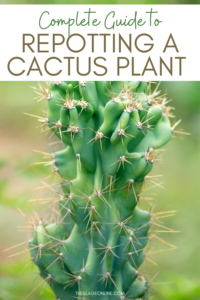Indoor cacti are akin to miniature ambassadors of arid landscapes. Their sculptural forms, adorned with spines and vibrant blooms, echo the resilience of nature! Adequately caring for these drought-tolerant specimens ensures that your home reflects not only style but also an intriguing botanical narrative.
To cultivate a thriving indoor cactus garden, four essential considerations come into play: understanding their habitat requirements, mastering the art of watering, selecting the right soil and containers, and employing strategic placement strategies.
Understanding Their Environmental Needs
Each cactus, an evergreen sentry from its native terrain, possesses unique environmental requirements. Despite their reputation for resilience, cacti thrive best when you emulate their native conditions. Most species hail from regions of intense sunlight and low moisture. Therefore, emulating the dry, sun-drenched conditions is paramount.
Lighting is perhaps the most crucial aspect of a successful cactus habitat. Ideal placement would be near south or west-facing windows, where they can bask in at least six hours of direct sunlight daily. However, one must tread carefully; too much intense afternoon sun can scorch their delicate epidermis. Rotating your cacti regularly can help mitigate uneven growth and ensure that all sides receive adequate sunlight.
Temperature preferences vary, but a general rule of thumb is to keep your indoor environments between 70-80°F (21-27°C) during the day and slightly cooler at night. Most cacti flourish when they experience a temperature drop akin to the natural diurnal cycles of their native habitats.
Managing Watering Rituals
Watering cacti can indeed feel like negotiating a delicate symphony. The balance between under- and over-watering is a fine line to tread. Understanding that cacti are adapted to survive in arid environments is critical; the key to a healthy cactus is allowing the soil to dry out completely between sessions of hydration. This mimics the natural rainfall patterns of their indigenous homes.
During the growing season, from spring to early autumn, your cacti may require watering every two to three weeks. However, during the dormant winter months, reduce this frequency significantly, as the plants enter a state of rest. To determine the need for water, one can employ the finger test—insert your finger into the soil up to the second knuckle; if it feels dry, it’s time to hydrate.
When it is time to water, do so thoroughly, allowing excess water to escape through drainage holes in the pot. This process will avert the risk of root rot, a common malaise for cacti exposed to prolonged moisture. Employing distilled water or rainwater, if available, can also be beneficial, as cacti tend to be sensitive to fluoride and chlorine found in tap water.
Selecting Soil and Containers: The Foundation of Success
An often-overlooked aspect of cactus care is the importance of appropriate soil and container selection. Standard potting soil tends to retain moisture too long for these drought-loving plants. Instead, a well-draining cactus mix, enriched with coarse sand or perlite, provides an ideal substrate that facilitates aeration while preventing moisture retention.
As for containers, it is paramount to choose pots with adequate drainage. Terracotta pots are particularly advantageous, as they breathe well and absorb excess moisture, allowing the soil to dry out faster. Ensure that the size of your pot correlates with the size of your cactus; a larger pot after transplanting encourages root rot due to excess soil retention and moisture.
Strategically Placing Cacti for Optimal Growth
Placement of your indoor cacti is akin to selecting the perfect stage for a performance. The right setting can bring out the best in these plants. Consider the dynamics of your home environment. Do you frequently open windows, or is there a draft? Drafts can create conditions reminiscent of a winter blizzard, which most cacti would abhor.
Incorporating cacti into your indoor decor can create delightful visual interest. Consider crafting a succulent garden with various colors and textures, or strategically placing them at varying heights to create a dramatic display. Remember that each cactus has its unique character and will flourish when matched with the right companions in both style and care requirements.
Fostering a routine that includes periodic observation of your cacti is beneficial too. Watch for signs of stress or health: wilting, discoloration, or a sudden lack of growth can indicate an incompatibility in conditions. In the world of cacti, staying vigilant is key to developing a thriving indoor oasis.
Conclusion: A Journey of Growth and Discovery
Caring for indoor cacti is an enriching endeavor fraught with opportunities for growth—both for the plants and the caretaker. Employing these essential tips not only aids in nurturing healthy cacti but also creates a serene connection to nature. Embrace the journey, and let your indoor cacti thrive as verdant storytellers of resilience, beauty, and the stunning adaptability inherent in the natural world.





Leave a Comment